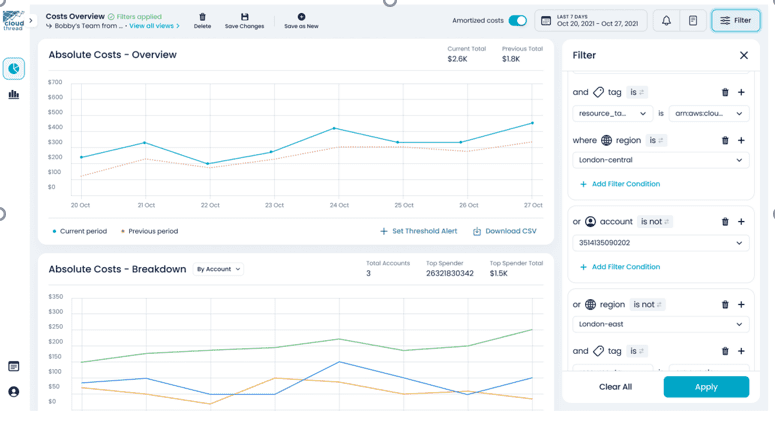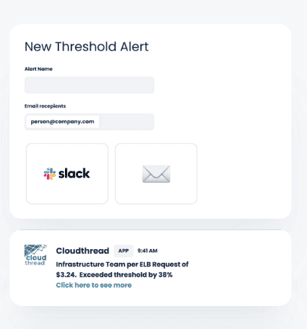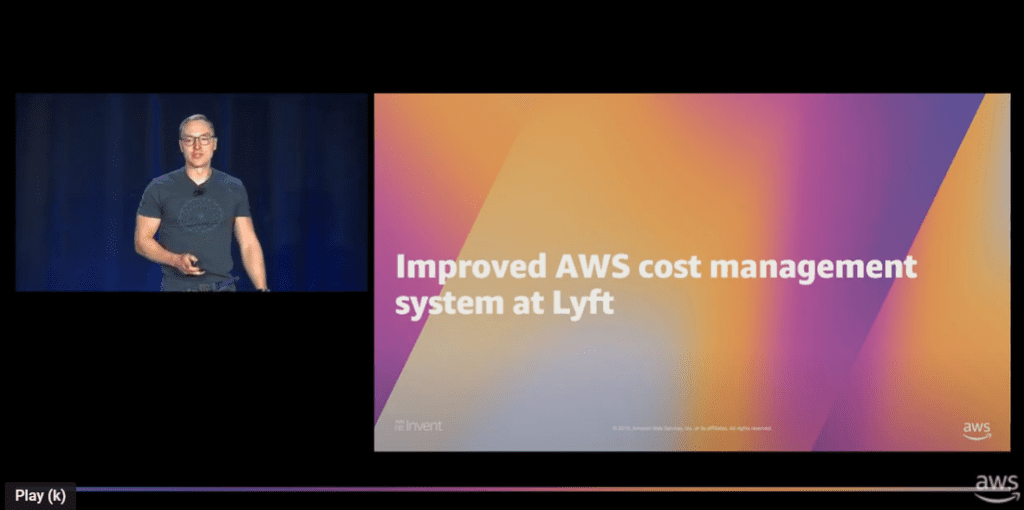CloudThread is part of a profile series featuring startups participating in the Innovation Path at Cloud Wars Expo, taking place June 28-30 in San Francisco.
Who They Are:
CloudThread is a startup focused on a massive opportunity: helping companies that use cloud services (initially focused on Amazon AWS customers) to optimize their cloud spend. How? By maximizing visibility into that spend and helping customers build a culture of cost accountability.
That focus on culture should sound unique because you don’t hear it all that often from tech startups. It’s important because the best tools in the world aren’t going to deliver results without a commitment to fully leveraging their capabilities and optimizing business processes. “The goal is for companies to be confident in their cloud cost efficiency, to be as cost-efficient as possible,” says Daniele Packard, CEO and co-founder.
AWS’ reach is an indicator of the opportunity in front of CloudThread: Amazon AWS (#2 on the Cloud Wars Top 10) claims over one million active enterprise customers.
CloudThread is an eight-person company backed by $3 million in venture funding. The company celebrates its remote operating model, which allows it to place primary focus on attracting the best employees.
Another co-founder, Ilia Semenov, previously worked at Lyft with a focus on tracking the same types of cloud usage, cost, and visibility metrics that CloudThread delivers to its customers.

“What companies are struggling with most is making engineering teams aware of their costs and getting them to take action. We’re moving from a mindset of ‘pay less from a rate perspective’ to ‘my teams are fluent in their cost efficiency and understand our costs from the cloud, not just at a business level but for individual engineering teams’.”
Daniele Packard, founder and CEO, CloudThread
What They Do:
Cloud Thread aims to solve the sticky problem of accurately forecasting and managing cloud spending in the face of unpredictable traffic and complex cloud pricing models. A number of factors contribute to the complexity that customers need to manage:
- The number of services and options to choose from (AWS has more than 20)
- The complexity of configuration: AWS Elastic Compute Cloud (EC2) instances are available in thousands of types with different pricing options
- The growing use of compute-intensive applications such as machine learning and virtual reality drive up cloud costs.
The good news is that cloud platform companies provide exhaustive information about the pricing of their services; unfortunately, it’s not easy to combine that information with application and resource usage in ways that enable proactive changes. That’s where CloudThread sees the opportunity to help customers break through the complexity for greater visibility and control.
The company’s Cloud Cost Telemetry framework ingests data from Amazon’s AWS CloudWatch, combines the billing detail with application performance data, and helps customers answer questions including:
- Which applications are driving spend?
- Why are costs going up when requests are stable?
- Are costs growing in line with user activity?
- Why are application costs spiking?
CloudThread presents this data in dashboards; here’s one example:

CloudThread delivers notifications through Slack so that critical cost and usage information is available within customers’ existing tools. Example:

The company’s software focuses on unit cost metrics. Examples of such metrics for business users include cost per checkout (for an e-commerce site) or cost per ride (for a ride-sharing service). It also tracks engineering unit metrics such as cost per EC2 instance and cost per gigabyte.
CloudThread execs emphasize this point when it comes to costs: the objective is not as simple as reducing costs but to ensure that cloud spend drives the most value while promoting accountability that enables individual teams to exert ownership over their business performance.
Who They’ll Impact and Expected Results:
CloudThread currently has customers in production but, based on its early-stage status, is not ready to share specific customers and application details. The company’s target buyer includes engineering and financial operations leaders. “When we talk to a company, it’s who owns the cloud bill – what person is associated with that bill,” Packard says.
There are solid examples of the benefits that can be realized through a cloud cost efficiency approach.
Airbnb, for instance, shared a detailed analysis of how the company reduced its AWS costs. When the company began tracking its monthly “cost of infrastructure,” Airbnb set a goal of holding steady in terms of a unit metric called “costs per night booked.” The company worked closely with AWS to manage its costs effectively; it built attribution and reporting capabilities internally.
The result: “a $63.5 million year-over-year decrease in hosting costs, which contributed to a 26% decline in Airbnb’s cost of revenue. The changes stemmed from better contract management and utilization of our third-party cloud services.” The company shared those results in early 2021.

In addition, Lyft, where CloudThread co-founder Semenov worked previously, has stated publicly that it reduced AWS spend by 40% by identifying and eliminating AWS instances with low CPU utilization.
CloudThread, of course, is looking to deliver similar results to its customers.
The Future:
There are lots of interesting developments in the pipeline with CloudThread.
First, the company will be engaging directly with CXOs at the Cloud Wars Expo Innovation Path; that’s an awesome opportunity to get a direct view into how its technology can drive business outcomes.
Customer examples such as Airbnb and Lyft are indicative of the benefits it expects to deliver. We’ll check back with CloudThread and its reference customers when they become available because those results should serve as excellent proof points.
It will be fascinating to watch as CloudThread grows. While it’s too early to say what other clouds might be supported, Cloud Wars #1 provider Microsoft represents an obvious next choice.
Closing Thoughts:
AWS customers essentially have three choices to optimize cloud costs today: use Amazon tools, roll their own, or tap a company like CloudThread. As Airbnb noted in detailing its experiences, building its own tools “was a huge body of work, and should not be under-estimated.” Except for those companies with the engineering teams, budgets, and wherewithal to roll their own, a pre-built system that ingests AWS data represents a compelling option.
CloudThread’s straightforward pricing model that is tied to monthly AWS spend holds strong appeal, as does the integration with core tools such as Slack for alerts and insights that support proactive actions to manage costs and performance.
CloudThread’s focus on the combination of culture and technology positions it well to engage with top execs who are focused on business outcomes first and technology enablers second.
For more in-depth insights on the categories that matter from top experts, register now for the Cloud Wars Expo.










